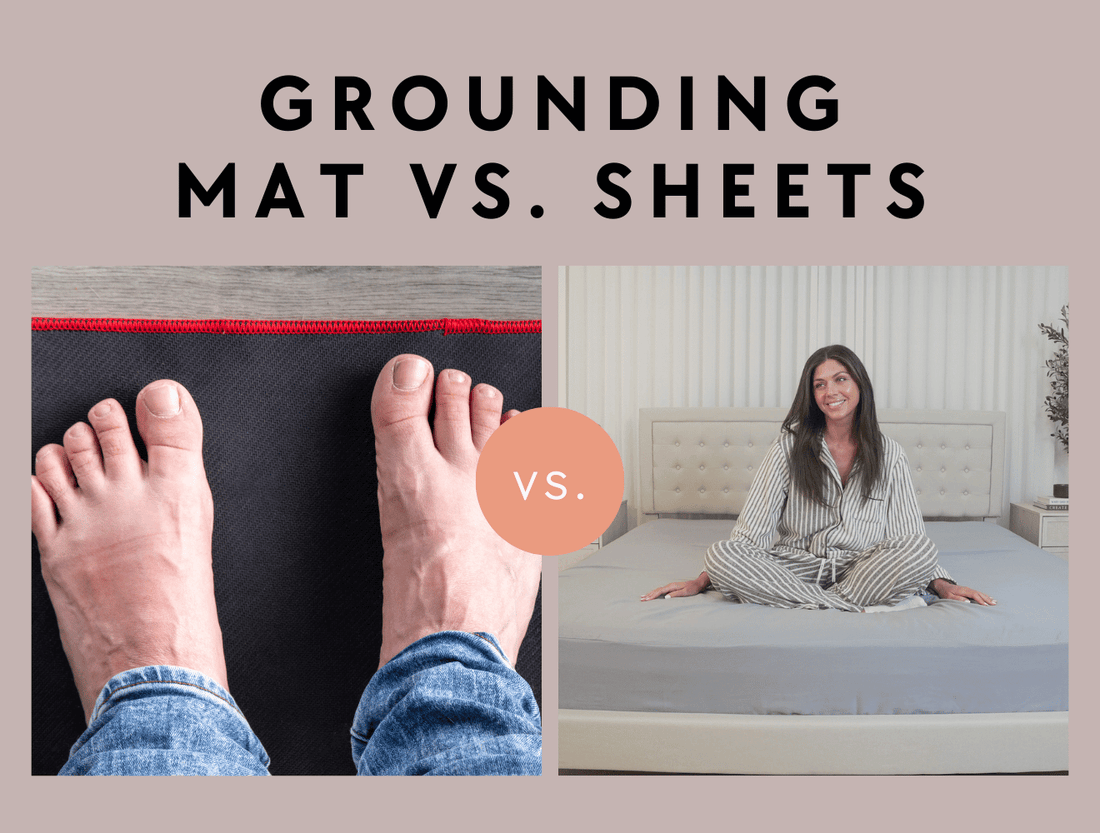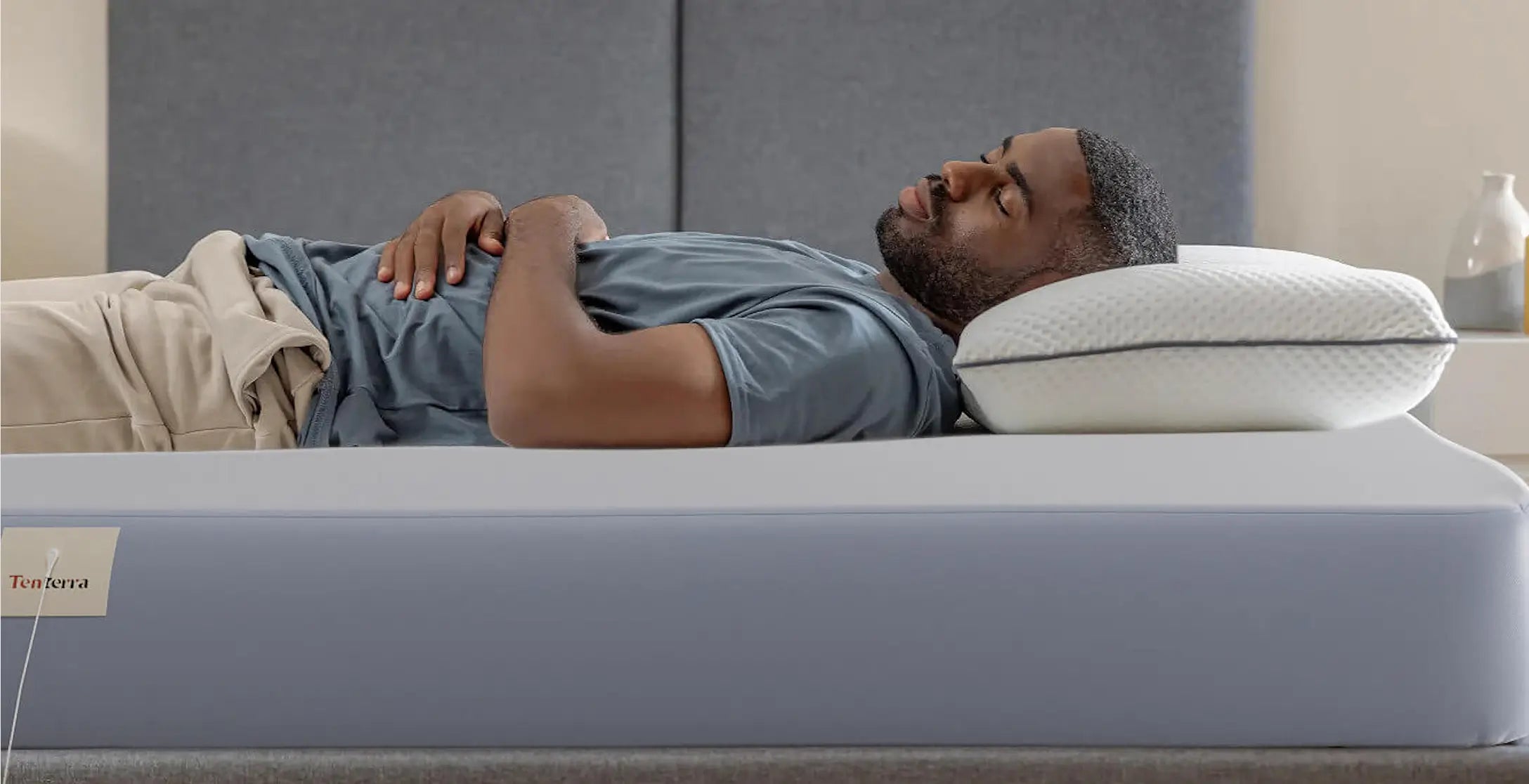
Grounding Mats vs. Sheets: Which Is the Best Choice for You?
Share
Introduction
In recent years, grounding practices, from sheets to mats, has become a popular wellness trend as more people explore natural methods to boost overall wellness. But when it comes to choosing between a grounding mat or a grounding sheet , many wonder which is better suited for their needs. From my own experience each has its own advantages.I’ve seen firsthand how each can impact sleep, stress levels, and overall well-being, making the decision dependent on personal needs and preferences. This article will break down the differences between grounding mats vs sheets, and practical considerations of each option, backed by research and my own personal experience working with both, helping you make the best choice for your grounding journey.
Table of content
1. Grounding Mats vs. Grounding Sheets – Key Differences
When choosing between grounding mats and sheets, it’s essential to understand their unique applications.
Grounding Sheets
Grounding sheets are bed linens , woven with conductive materials like silver threads which are designed to connect the body to the Earth while sleeping, potentially offering continuous grounding benefits overnight. Studies have indicated that sleeping grounded can positively affect sleep cycles, helping to stabilise cortisol levels and enhance relaxation (Ghaly & Teplitz, 2004)
For me, the full-body contact with grounding sheets has been a positive experience , particularly in helping improve my sleep and relaxation. They allow for consistent, uninterrupted grounding overnight, which is helpful if you're looking for deep, restorative sleep. After a few nights of using the TenTerra grounding sheet, I woke up feeling more refreshed and less tense, a result I hadn’t experienced with mats.
Grounding Mats
Grounding mats, on the other hand, are smaller and designed for versatile use. Grounding mats can be placed under desks, on chairs or on the bed.They offer the flexibility and portability of grounding while sitting or working that a sheet may not provide.
I often use my grounding mat under my desk or during meditation sessions, which makes it easier to ground throughout the day. However, I noticed the mat covers a smaller surface area and doesn’t maintain continuous skin contact as sheets do. Mats may be a great option for those wanting grounding during their daily activities but might not be ideal for overnight use.
Research Insight:
According to Explore: The Journal of Science and Healing, grounding products can have significant calming effects, with benefits including improved sleep and reduced stress (Chevalier et al., 2012). Both mats and sheets provide grounding, but the prolonged exposure from sheets during sleep may contribute more to resetting circadian rhythms and enhancing rest.
2. Grounding Mat vs. Grounding Sheets: Comparing Benefits
Convenience and Practicality
- Grounding Mats:
Mats are lightweight and portable, making them ideal for quick grounding sessions throughout the day, whether you're working at a desk or relaxing on the couch. They’re particularly effective for grounding specific areas, like your feet or hands. - Grounding Sheets:
Grounding sheets are better for overnight use, providing full-body contact with the Earth's energy for extended periods. This allows for consistent grounding, making it a more comprehensive option for improving sleep quality and overall well-being.
Research Note: According to research published in The Journal of Inflammation Research, grounding has been shown to reduce inflammation and improve blood flow. The continuous contact provided by grounding sheets could offer more extended benefits, particularly for those seeking to improve chronic conditions or sleep quality (Brown et al., 2015).
3. Effectiveness: Which One Provides Better Grounding?
- Surface Area and Contact
Grounding sheets offer more extensive surface area coverage, grounding your entire body while you sleep. This can provide more profound benefits, particularly for improving sleep and reducing nighttime cortisol levels (Chevalier et al., 2010). - Targeted Grounding for Active Use
Grounding mats are useful for daytime use and localized grounding, offering flexibility for people who are on the go or working at a desk. They’re often used during activities like yoga or stretching, adding a grounding element to your daily routine.
Research Insight: A study published by The Journal of Alternative and Complementary Medicine found that grounding can improve sleep, reduce pain, and lower stress levels. Grounding sheets, with their larger surface area, might enhance these benefits by maintaining continuous grounding throughout the night (Chevalier et al., 2012)
To learn more, consult our guide for how grounding works.
4. Cost and Durability: What to Consider
- Cost Comparison
Grounding mats are generally more affordable and accessible for people looking to incorporate grounding into their daily activities. However, they only target specific areas of the body.
Grounding sheets may come at a higher price point due to their larger size and the materials used, but they provide full-body coverage, making them a better investment for those focusing on long-term wellness goals.
- Durability
Both products are durable, but sheets require regular cleaning and maintenance. Grounding mats, being smaller and portable, may hold up better in high-traffic areas but offer less comprehensive coverage.
Research Support: According to The Journal of Environmental and Public Health, maintaining proper grounding connections and regularly cleaning grounding materials can preserve their effectiveness (Oschman et al., 2010). This makes grounding sheets a sound investment for home use, while mats are an accessible, budget-friendly introduction to grounding.
5. Specific Use Cases: Grounding Mat vs. Grounding Sheets
- For Sleep and Relaxation
Grounding sheets are ideal for people looking to improve sleep quality. With full-body grounding, they help align your body's circadian rhythms and reduce nighttime cortisol spikes, improving overall rest (Ghaly & Teplitz, 2004). - For Daytime Use and Portability
Grounding mats are best suited for individuals who want grounding benefits while sitting, standing, or exercising. They’re portable and easy to move between home, work, or even while traveling.
Here's a simple comparison table that breaks down the key attributes:
6. Who Should Use Grounding Sheets or Mats?
- Grounding Sheets for Sleep and Chronic Issues:
Ideal for individuals looking to improve sleep quality, manage chronic stress, or support recovery from pain, grounding sheets provide full-body grounding over extended periods. - Grounding Mats for Targeted Relief and Daily Use:
Best for individuals needing quick, targeted grounding relief. This may be especially beneficial for people who experience stress or discomfort in specific areas, such as the feet or legs.
Research Support: Studies have shown that grounding can positively affect mood, stress, and inflammation levels (Chevalier et al., 2012). Grounding mats allow users to incorporate grounding easily into daily routines, which can benefit individuals looking for short, frequent grounding sessions.
7. Personal Recommendation: Which Is Right for You?
Through my experience, here’s what I’d recommend:
After experimenting with both grounding mats and sheets, I find grounding sheets best meet my needs for consistent, all-night grounding. Studies indicate that grounding sheets can improve sleep by managing cortisol levels and reducing inflammation, making them a great choice for those focused on long-term wellness.
With Ten Terra’s grounding sheets, I’ve experienced quality design and functionality. Their hypoallergenic materials, conductive silver threading, and durability make Ten Terra sheets a solid choice. While mats are practical for daytime use, grounding sheets align seamlessly with my sleep routine, providing the continuous grounding that supports restful, rejuvenating sleep.
- Choose Grounding Sheets if: You’re focused on improving sleep, managing stress, or addressing chronic issues. Sheets are best for overnight use, integrating effortlessly into a restful routine.
- Choose Grounding Mats if: You prefer flexibility and grounding access anytime during the day. Mats are portable, affordable, and ideal for quick grounding sessions or boosting energy throughout the day.
For those looking for a trusted grounding sheet, Ten Terra’s grounding sheets are an excellent option. Their high-quality, hypoallergenic materials and superior conductivity ensure maximum grounding benefits with minimal upkeep.
Conclusion: Grounding Sheets vs. Mats – Finding Your Best Fit
Both grounding mats and sheets offer unique advantages, and the best choice depends on individual wellness goals. For those prioritizing sleep quality and long-term grounding, grounding sheets may be the ideal choice. However, for an affordable, versatile solution for targeted use, grounding mats can be a better fit.
For my routine, grounding sheets have become essential to my sleep setup. While mats are convenient for day use, grounding sheets integrate seamlessly into my nightly routine, providing continuous grounding for a restful and rejuvenating sleep.
By understanding your needs and preferences, you can select the grounding product that best supports your lifestyle and wellness journey.
References:
- Adriani, M., & Zubaedah, T. (2022). The effect of earthing therapy on blood pressure and circulation in pregnant women with hypertension. International Journal of Maternal and Child Health.
- Brown, R., Oschman, J. L., & Chevalier, G. (2015). Earthing: Health implications of reconnecting the human body to the Earth’s surface electrons. Journal of Inflammation Research.
- Chevalier, G., Sinatra, S. T., & Oschman, J. L. (2010). Grounding the human body during sleep reduces night-time levels of cortisol. Psychology & Health.
- Teli, S., Velou, M. S., Paramasivam, L., & Divya, D. (2015). An experimental study on the immediate effect of direct barefoot contact with earth on prehypertension. International Journal of Medical Research Review.
- Oschman, J. L., Chevalier, G., & Brown, R. (2010). The effects of grounding on inflammation, immune responses, wound healing, and prevention and treatment of chronic inflammatory and autoimmune diseases. Journal of Environmental and Public Health.


